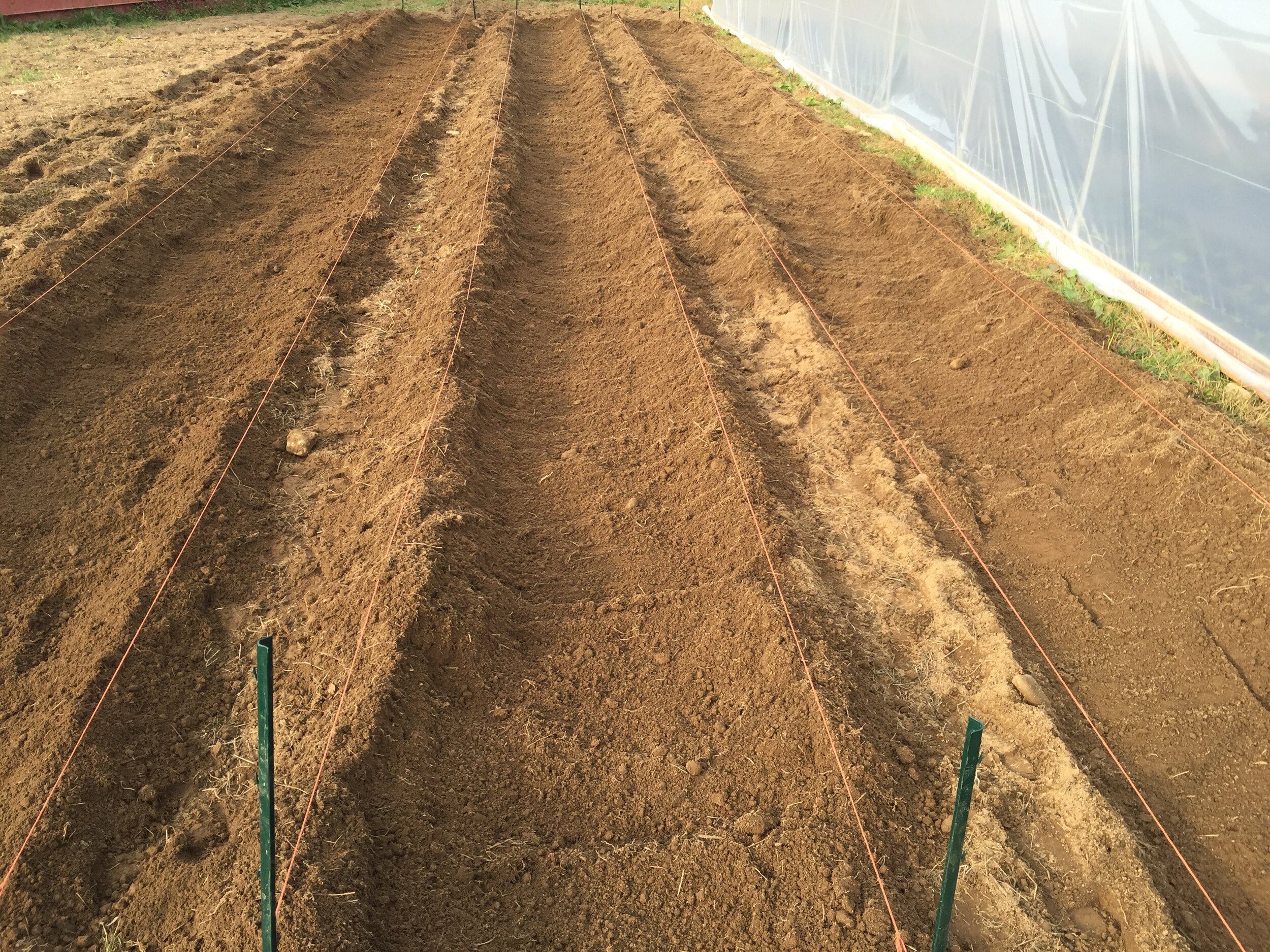Growing Tulips, Narcissus & Other Fall-Planted Bulbs
/Spring flowering bulbs are some of my most favorite flowers to grow! They are planted in the fall before the ground freezes in cold climates, and in the late autumn/early winter for the rest of us. Often these bulbs show the first signs of life in the early spring, and it’s a much needed reminder that the flowers will once again be blooming after drab winter.
Growing Tulips & Narcissus (Daffodils)
I will be the first to admit that growing tulips in the South can be tricky. Our winters are not quite cold enough for many of the really special varieties that we all drool over (and that we sell in our online shop), but there are a few systems to ensure that you have a lovely tulip crop in most places.
WHEN TO PLANT
In colder climates where the ground freezes during the winter, it is important to plant your tulips and narcissus while you can still work the soil. The cold winter temperatures in these climates will provide the necessary vernalization for tulips to grow on long stems. These flowers need a long period, about 12 weeks, of winter cooling (also called vernalization) in order to flower and grow properly. Vernalization occurs naturally in cold climates or can be artificially achieved in warmer climates.
Tulips and narcissus should be planted in the late Fall in cooler climates where the ground freezes.
For those of us in areas where the ground does not freeze (or does only for a short period of time), tulips and narcissus should be planted in December or January. The bulbs can be cooled in a refrigerator for up to 4 months before planting, creating an artificial vernalization period. Do not store bulbs in plastic in the fridge because they require ventilation – a paper bag, egg carton, mesh or canvas bag is best. And do not store bulbs with fruit because fruit emits ethylene gas which will ruin the bulbs. Storing bulbs in the fridge for about 6-8 weeks before planting is ideal. Only take the bulbs out of the fridge when you are ready to plant.
WHERE + HOW TO PLANT
Thankfully these principles are basically the same for all climates. Tulips bulbs are especially prone to rotting and require a spot with good drainage. Choose a spot in full sun for cool climates and partial shade is helpful in warmer climates. We prefer to plant tulips and daffodils via the trench method since we’re planting hundreds (or maybe thousands) at a time. Dig a trench that is about 3’ wide – you need to be able to reach the middle of the trench from the edge, otherwise you won’t be able to harvest the flowers from the middle of the row. The trench should be at least 8” deep. Place the bulbs with the pointy side up, like placing eggs in a carton. Because the bulbs are prone to rot, watering is not recommended unless you are in a drought. We do not add irrigation or water (besides natural rainfall) to these spring bulbs.
For smaller amounts of bulbs, instead of planting in trenches you can plant in clusters. This will give more visual impact in your garden. Most of these bulbs can be successfully grown in large pots outdoors; just be sure not to overwater.
Because tulips are prone to disease, we treat them as annuals and buy fresh bulbs every year.
Narcissus will multiply and can last for several years. Planting narcissus in partial shade in southern climates is helpful for them to survive the scorching summer heat. After the narcissus are done flowering, allow the foliage to turn yellow and die back. Then cut the foliage off at soil level and use it to mulch the bed. Using manure or compost on narcissus beds in the South isn’t recommended since it adds heat (which they do not need more of).
Growing Fritillaria, Muscari & Leucojum
These bulbs can be planted using the same methods and timing as we do for tulips and narcissus. In warmer climates, artificial cooling is a recommended for these varieties too. A general rule of thumb is to plant the bulbs 3x as deep as the bulb’s height. Take this into consideration when planting tiny-sized bulbs like muscari.
I hope you find joy + success in growing these beautiful spring blooming flowers! You may also want to check out our Ranunculus and Anemone Planting Guide.
xo Niki




















